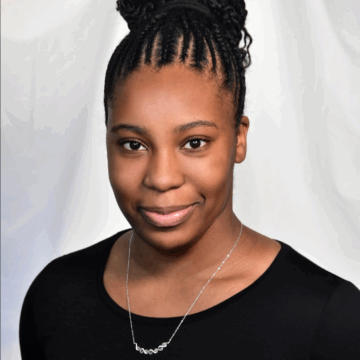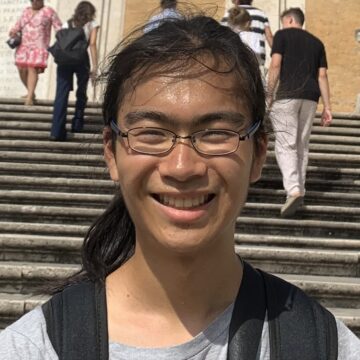
By Jillian
“No, no, no, you’re all doing it wrong! The secret to developing realistic drawings lies in your ability to study every nuance of the object in front of you,” my art teacher advised. “Try sketching with one eye closed; it’s all about perspective, people!”
My classmates accepted his advice and I watched as they attempted to make sense of the lifeless apples and pears that lay on the desk in front of them. I, too, clamped my left eye shut, pretending that this technique altered my view in the same manner it affected my peers. It didn’t. With one eye closed, my fruit appeared precisely the same as it had with both eyes open.
As a result of a Retinoblastoma diagnosis at two years old, my world, which my parents dotingly refer to as “Jillian’s world,” has always appeared slightly different from that of others. I have no recollection of having binocular vision, so depth perception has always been a non-existent ability. For the majority of my childhood, I felt ashamed by my prosthetic eye, purposely pushing my hair toward the left side of my face and avoiding all eye contact that surpassed ten seconds. I hated that my eyes did not appear the same, and constantly worried how others would perceive my abnormality. It was not until last summer, when I received a government scholarship to study Hindi in India, that my perspective regarding “Jillian’s world” was altered by one unlikely symbol: the swastika.
I encountered it upon entering my host-family’s home for the first time. It was plastered directly on top of their front doorstep in between two mosaic footprints. I had seen the swastika millions of times in history books and documentaries, but blatantly confronting it in person was an entirely different story. My heart started to sting as images of skeletal bodies and families torn apart raced through my head. The swastika was the face of the bigotry and discrimination that I strongly denounced. I could not wrap my head around the fact that I was about to spend my summer with people who displayed a hate symbol in front of their home.
Within a matter of days I discovered that my host-family was the complete antithesis of the negative characteristics I had originally associated with the swastika. They took me to lavish weddings and temples and taught me how to cook Indian cuisine. My host-mom showed me traditional techniques to create art and we shared many laughs at my many failed attempts at bargaining with market shopkeepers in Hindi. By the mid-way point in my program I had fallen in love with my host-family and their vibrant culture. It was then that I realized that I needed to take another look at the swastika through my host-family’s lens.
One afternoon, I asked my host-mom what the symbol meant in her culture, informing her that it was an infamous hate symbol in the United States. Her response is forever ingrained in my memory.
With wide eyes and a furrowed brow, she answered, “A hate symbol? No no, we believe the swastik is a symbol for peace and good fortune. Why is it hateful?”
When I mentioned the Holocaust, she appeared even more confused. After further researching the symbol, I found that the swastika, known as the swastik in Hindi, had been a Hindu symbol of peace thousands of years before it was ever a symbol of evil. We sat across from each other, both amazed at how our views of one symbol could oppose one another, yet be equally valid in their own respect; this was the beauty of perspective. Since returning from India, I now push my hair away from my face with headbands and my fear of sustained eye contact has vanished. My disability does not limit “Jillian’s world,” but rather, gives me the ability to see far and wide, apples and pears included.
Admissions Committee Comments
Jillian’s essay creatively uses the metaphor of imperfect vision to portray themes of different world views, acceptance, and individual growth. She talks about how the swastika as a symbol is perceived differently in various cultures. What her essay does particularly well is show a journey from interest to action to greater awareness. We get the sense that Jillian is motivated to take initiative, get engaged in a topic, and eager to broaden her mind. These are important qualities for a successful student, and qualities that we value as a research university with a liberal arts core.





